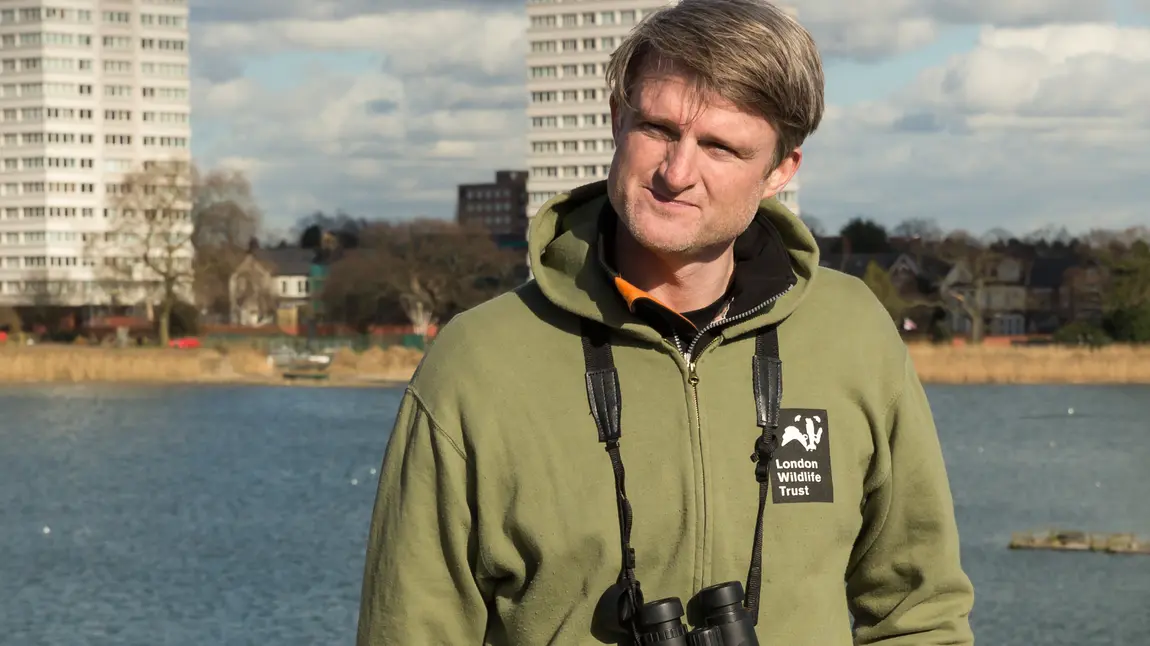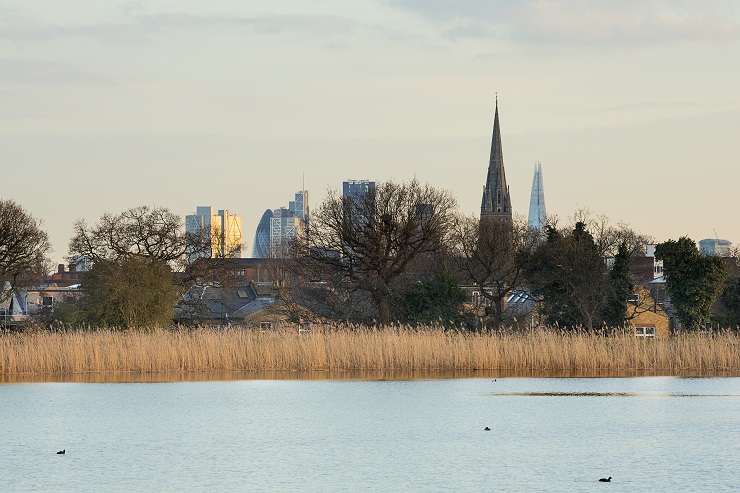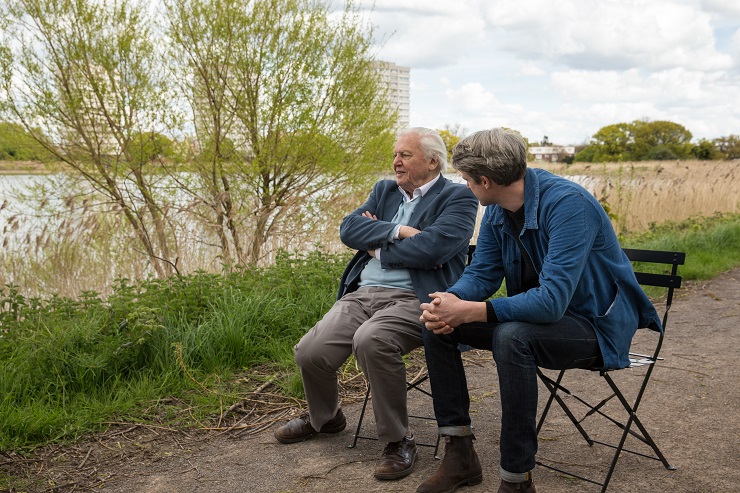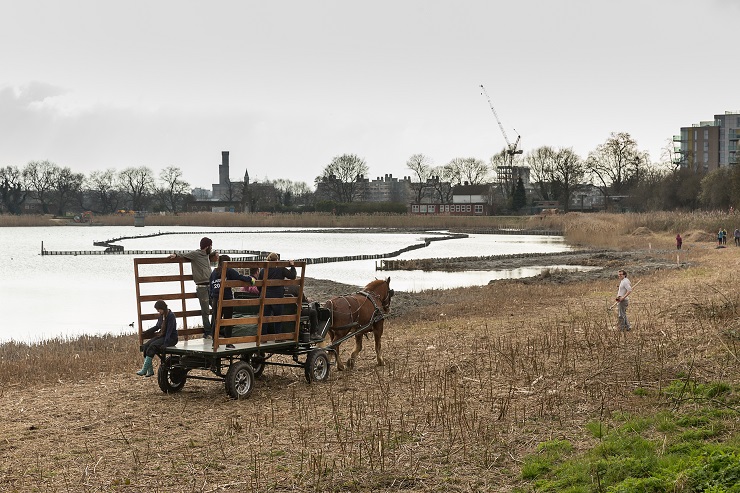Behind the scenes at Woodberry Wetlands

Until recently, the Woodberry reservoir in Stoke Newington, north London, was off limits to local people.
In fact this month marks the first time since it was built in the 19th century to serve the population of London with fresh water, that the 12-hectare area has been opened to the public.
The change is thanks to the Woodberry Wetlands project, funded by a £784,300 grant from HLF. The scheme has seen the east reservoir rejuvenated and opened up - free to anyone seeking tranquillity and wilderness in the city.

A long history
Woodberry Wetlands is now a spectacular place – look one way and it’s reminiscent of the countryside (the team used a Suffolk Punch draught horse as a gentler alternative to heavy vehicles on the site) and look the other and there are the gleaming blades of the new Woodberry Down housing estate. On the day we visit, the singing of birds is interspersed by the grinding of machinery as the builders approach their deadline.
The east and west reservoirs were built in 1833. They were a later addition to the 17th-century New River scheme, led by Hugh Myddleton to bring fresh water from Hertfordshire to London. The Victorian pumping house of Stoke Newington and the reservoirs were a target for German bombers during the Second World War – fortunately they avoided a direct hit but the council later built thousands of council homes on bombsites and existing villas in the surrounding area.
London Wildlife Trust Regional Development Manager David Mooney said, “Never give up on your project. If it’s a good idea, it will happen.”
The reservoirs faced further threats in the 1990s, as plans were drawn up to concrete over the reservoirs and build houses on them. Only a campaign by local people and a petition to parliament saved the day.

Today, the west reservoir is used for boating, and the east – still a functioning reservoir - opened to the public this weekend for the very first time with a ceremony attended by Sir David Attenborough.
Time for nature
David Mooney of London Wildlife Trust has spent four years working on the project. He grew up in nearby Finsbury Park, and after becoming “disillusioned” with life as a biology teacher joined the London Wildlife Trust, working as an education officer on the west reservoir. He “began chatting” with Thames Water who “took some convincing" to let people in to the east reservoir. Eventually they teamed up with Hackney Council and property developers Berkeley, plus HLF, to turn the reservoir into a place people – as well as wildlife - could use.

He gives us a tour of the revitalised reservoir – “when I first got here, it was pretty barren” – sections of the reedbeds have been transplanted, and a "mosaic" of brambles, willow and alder developed between the reedbed and scrub – now filled with songbirds. A concrete carpark has been replaced with raised beds and beehives. A wildflower meadow is being planned, with chalk-loving plants to be seeded in leftover building rubble. A woodland path weaves around three sides of the reservoir.
David has spotted kingfishers, reed warblers, reed bunting and other birds: “all nature needs is a little bit of time left alone and: ‘boom’!” he says.
At one end of the reservoir is a restored Grade II listed building. It was built in 1833 as a coal store and kitchen for preparing the New River Company directors’ dinners. It had been “at risk”, inaccessible and covered in ivy, but now - thanks to HLF and the Association of Industrial Archaeology - is spruced up with a new roof terrace where visitors can enjoy coffee overlooking the views. Smart and inviting, it will be a visitor hub for training and education.
Reaching out to Londoners
Part of the requirements for Woodberry Wetlands is that it would reach out to Londoners and other visitors who wanted to get involved. David considers that over the past eight years there have been “5,000 volunteer days, 56,700 volunteers, 3,000 volunteer hours a year”. The volunteers are taught practical conservation skills, and there are engagement programmes reaching out to schools and a rangers scheme for young people. Going forward, there is a packed programme varying from training in urban beekeeping and bird identification to crafts workships, the “Wild Adventure Club” for children, walks, tours and even “Sunset Tai Chi”.
The HLF grant was “vital” David says, “the project wouldn’t have happened without it". He has big further plans, wanting to extend the habitats and expand the visitor centre.
It is also set to be part of a “green corridor” for wildlife in London – Walthamstow Wetlands is set to open in 2017, a project combining a £4.4million HLF grant with cash from Waltham Forest Council, site owners Thames Water, and the Greater London Authority, to be managed by the London Wildlife Trust.
He offers advice for anyone considering embarking on an HLF project:
“First, get a partnership, don’t rely only on one funder. Two, ask local people what they would like, and how they want to be involved. And three: never give up. If it’s a good idea, it will happen.”
Find out more
Read more about Heritage Grants and what you can do for your local landscape.